|
A Conversation with Hilary Lorenz BY Jessica Rath Abiquiú is almost synonymous with Georgia O’Keeffe. Because of her, the area has attracted a steady stream of artists over the years. The annual studio tour just celebrated its thirtieth anniversary, with over fifty participating artists. However, there’s a number of residents with other fascinating interests and occupations: for example, I’ve interviewed paraglider Mario Manzo (a photographer also), or model railroad builder Bob Dolci, or geologist Kirt Kempter. When I heard that Hilary Lorenz is an ultra-marathon runner, I was curious – a WHAT? Is it longer than a normal marathon? Why would anybody want to do this? I must confess that I had never heard of ultra running, so I was eager to learn what this is all about. Hilary (who is also an artist, by the way) kindly agreed to an interview and answered my questions. First of all: yes, it is longer than a marathon run which is 26.2 miles. It can be 50, 100, 200, and more miles. There are also timed events, with participants running for 6, 12, and 24 hours, and even multiday races. But let’s start at the beginning. Hilary Lorenz was born in Michigan but spent most of her life in New York City, before moving to Abiquiú. As an award-winning print media artist, she was chosen for a residency at the Santa Fe Art Institute in 2005, and fell in love with the mountains while hiking on weekends. A friend suggested that she check out Abiquiú before returning to New York, and just as it happened to so many people who end up here: “I found it incredibly charming. And the landscape just was so unlike anything I had ever seen that I was a bit smitten by it,” she told me. But it took a while before she would move here. Hilary continued: “I went back to New York, and about five years later I was training for the Boston Marathon but got a very bad stress fracture and couldn't run that year. Instead, I would fantasize about buying a second home, either in upstate New York or New Mexico, neither of which were really realistic. But then this house came on my radar, and I ended up buying a casita in 2010. I built a studio here over the next two summers, and came out many summers and worked in my studio and ran. And then I decided to move here in 2021.” Of course I was curious: how did she get into running? And when did she start? Hilary started running in sixth grade, she said. They had to run for gym class, and for one of her first runs the whole class had to go around a two mile block. “That wasn’t a big deal,” Hilary told me, “I ran it, came back, and was instantly accused of cheating, because I got back so fast. My teachers wouldn't believe that I ran it so quickly!” But even at that age she would already run two or three miles two or three times a day. She was on the track team and on the cross country team, she would run before she went to school, she would run at track practice, and sometimes she ran again later at night. She has run almost her entire life, she never stopped – how amazing is that! I was guessing – it must make you feel good? Her answer was somewhat surprising. “Yes, it definitely feels good, but sometimes when you're racing, it is painful, it is severely painful. But all competition is like that,” Hilary explained. “I really want to do well and push way beyond my limits. I want to get the best out of myself.” And how did she get into marathon running, I asked. “I haven't run a marathon for a few years,” was her answer. “I'm far more interested in running a 50 mile or 100 mile distance. To put it in context, I turned 60 this year. On my birthday, my plan was to run 60 miles. Then in April, I'm going to compete in California in a 100 kilometer race. Hopefully I will do well enough to earn a spot in a lottery to get into this other race called Western States.” I looked this up. From their website: “The run starts in Olympic Valley, California, and ends 100.2 miles later in Auburn, California. The Western States Trail climbs more than 18,000 feet and descends nearly 23,000 feet before runners reach the finish at Placer High School in Auburn.” The map below gives you some idea about the ups and downs of this race. Hilary went on: “As part of my birthday celebration I will be running with a group of friends in May. This isn’t a race but an adventure: we’ll run 200 miles across Tajikistan. We're going to start near Afghanistan and run to China and go up into Kazakhstan.” “In August, I have a 209 mile run which starts at the northern part of Iceland, running to southern Iceland, and then we'll celebrate in the hot springs afterwards. And then I have one final 100 mile race in New Hampshire. That's how I'm celebrating my birthday. And the really cool thing is that the 100 mile race in New Hampshire is happening on my birthday weekend!” This isn’t most people’s first choice for a birthday celebration. How did Hilary get there? “When I first started running as a kid, I would compete in the mile and two mile race. I never ran short distances. I'm not a sprinter. My first marathon distance was the New York Marathon, and my goal was to run a fast enough qualifying time so that I could run the Boston Marathon. I've run New York a few times, I've run Boston a few times, I've run Chicago, and then a lot of my friends were doing 50 milers. So I ran my first 50 miles, at least 10 years ago, and that was a JFK 50 in Maryland. And it was really fun. It was fun until I felt: this hurts so bad! When I got to the end, it was as if my legs didn't want to work. But an hour later, they were fine, and I was completely happy.” “Then I started doing 24 hour races, or timed races. In a timed race you usually have six, nine, sometimes 12 or 24 hours. You pick your number of hours. It's a set course, sometimes it's as short as a mile, sometimes it's twelve miles, sometimes it's 20 miles. My first one was 24 hours, a one mile loop in Crissy Field in San Francisco. And in that year there was a blood red full moon.” Hilary painted this glorious picture: “We were running, running, running, and the Golden Gate Bridge is there, the sun starts going down, and this enormous moon comes up, and the things that you see and experience during that time – even now it gives me shivers, because it's so extraordinary. It's this totally transformational process. It's so beautiful that you don't want to go to sleep, you don't want to stop.” So there must be a number of other runners who like long distances, I asked. “Yes, there are many people that run ultra distance,” Hilary replied. “The 100 miles race that I'm going to do in New Hampshire in October, another friend of mine in New Hampshire is also running. We were texting each other and got on the computer right when it was going to open, so we could sign up. There were so many people trying to sign up to get in the race that the servers crashed! I got kicked out of it twice. I finally got registered, and within nine minutes, it was completely sold out.” I wanted to learn more about the 200 miles run from Afghanistan to Kazakhstan. “This isn’t a race,” Hilary explained. “We'll do probably 30 or 35 miles a day, and take a break and camp in the dirt. We'll be running through a desert and through very rural, uninhabited places. But running 30 miles day after day after day is hard on your body. I would rather just run it continuously, straight through, because then it would probably take around 95 hours, I'm guessing, but I've never run for 95 hours.” Hilary is also a coach for endurance training and told me how she got into that. “When I was working as a Professor of Art in New York, and while I was teaching, I was looking for something else that I could do, and I decided to take classes at the university. So I got my Masters of Science in Exercise Physiology in between teaching my classes, and shortly thereafter I was working for a coaching company. Next, I started my own coaching company where I do strength training with people. I train runners, most of which have really big goals, whether it's qualifying for the Boston Marathon, getting a sub 3-hour marathon, or running a 100 mile race.” “Let’s say someone wants to qualify for Boston and commits to eight or nine months of solid training. Now, imagine a nor’easter rolls in on race day—a tremendous storm. After all that training, you’re not going to give up your run. But if you’ve trained through snow, rain, and tough conditions, you’ll be ready. It’s not fun to run in pouring rain, but preparing in all weather means you won’t be thrown off when race day conditions are less than ideal. It’s all about being ready for anything.” I was curious: what is the average age of runners? And what are the extremes – how old is the youngest, and the oldest? Hilary had to look up the youngest, but found it: “There’s a nine-year-old kid from Santa Barbara who ran his first Ultra. Nine years old. But there is a tremendous number of people in their 40s, 50s, 60s, and 70s, and they listed several people in their 80s who ran the 100 mile race. The most decorated over 80 year old female is 82 year old Erlinda Biondic.” I’m so impressed! “There's definitely a lot of 20 and 30 year olds who are really strong, but people tend to get better later in their 30s and early in 40s, because they've been running for so much longer.” She told me a story to illustrate this.
“There was a race I did in Albuquerque, and I wasn't all that fit to do it, I was only okay, for a 50k (31.1 miles). It was the first time I was running with this particular Race Director, and people just took off really fast, and I thought, this is terrible, (because I felt so slow). Within 15 minutes they were all out of sight. I decided I would just be doing my thing. I got my plan, and I kept doing my thing. Little by little, the people who went out way too fast had to drop out or just couldn't keep up the pace. It was this eight mile loop, you'd go in one direction, and then you'd come back the other way.” “And then all of a sudden I turned around, and there were only men here. I wondered – have I passed all the women? Sometimes it's hard to tell when you're doing these back and forth loops. But I ended up winning the race! I came in first, and I was just totally blown away, but I attributed this to having a strategy and the skill to know how to pace the distance.” Hilary’s work as an artist is strongly influenced by her experiences while being outdoors, running. “Whatever I’m making in the studio starts with what I’ve received outside,” she told me. “It’s all intertwined. I wouldn’t be able to make my artwork without using a huge amount of my physical energy in nature. My art is based on my experiences in my environment, in nature.” What I learned from Hilary about running ultra marathons and the challenges she demands from herself is simply awesome. She keeps pushing her boundaries, constantly testing her limits. I love hiking, but even when I was younger than my 78 years and was fitter than I’m now, after making it up to Kitchen Mesa or the Pedernal I was always glad when it came to an end. I don’t think any of my hikes lasted longer than six hours, maybe seven at the most. But 24 hours? Or even 30? And not just walking, but running? I can’t begin to imagine how that must feel, to push against the pain, the exhaustion, the tired leg muscles that would prefer to stop, to collapse. I’m simply amazed by the sheer willpower. I hope that Hilary will make it into the Western States Race, with lots of thanks for this fascinating conversation!
0 Comments
HB290, the Vibrant Communities Act has been moved to Monday, February 24 at 8:30 am.
Thank you for reaching out to members of the House Government, Elections & Indian Affairs Committee. Please reach out to all the representatives from districts where your organization provides services. If you can show up on Monday, February 24 either in person (Room, 305) or via Zoom that would be terrific! ~ Shel Neymark Food Depot Santa Fe, NM — The Food Depot joins nonprofits across New Mexico in a call to modernize the state’s anti-donation clause. The outdated constitutional provision prevents efficient, trusted community services from directly accessing awarded state funds. The delays or legal barriers have blocked critical projects for food banks, libraries, community centers, mental health organizations, and other essential services. To access state-awarded funding, The Food Depot, headquartered in Santa Fe, has relied on Santa Fe County to act as its fiscal agent while serving nine counties and more than 80 nonprofit partners. During the pandemic, the county administered the food bank’s American Rescue Plan Act (ARPA) funds. This created extra administrative burdens on the county and a complex web of procurement, contracts, and ownership between the food bank and the county. In 2022, awarded funds through the Governor’s Hunger Initiative were subject to the anti-donation clause. The assets obtained through this grant–a fleet of vehicles and warehouse equipment–remain the property, and uncompensated management burden, of the County. “The Food Depot is fortunate to have a strong partner in Santa Fe County, a municipality with a clean audit”, said Jill Dixon, Executive Director of The Food Depot. “But for more rural counties, the anti-donation clause, while intended to protect taxpayer dollars, creates disparities from one community to another. Currently, the clause makes it nearly impossible to channel critical funding into rural and frontier areas that lack a municipality to take on the administrative burden.” Nonprofit organizations in communities without a fiscal agency, and ultimately the people who rely on them, are forced to go without essential services. In Mora County, Chicanos Por La Causa, an organization operating in 21 counties across New Mexico, has been forced to downsize a planned community outreach hub. The hub, set to provide mental health services, employment services, emergency food, and more, was supported by federal dollars and anticipated state funding. However, because Chicanos Por La Causa does not qualify for state funding without a qualified fiscal sponsor, the project is at risk. The lack of access to awarded state funds is also jeopardizing federal funding, which requires a state match. “The clause must be modernized so not-for-profit entities that have the ability to obtain federal dollars are not at a disadvantage or placed in a situation where federal dollars are lost due to the inaccessibility of matching funds,” said Joseph Greigo, president of Chicano Por La Causa. “Not-for-profit entities in the state of New Mexico play a pivotal role in providing much needed services not covered by state agencies.” Across the state, multiple nonprofit partners of The Food Depot have stalled or abandoned projects funded through state funds due to their inability to work directly with the state instead of through an approved municipality. In Gallup, The Community Pantry and the City of Grants have struggled to move forward with a strategic expansion to the food bank despite securing funding having been awarded by the State of New Mexico. The management of procurement and lease agreements places an uncompensated administrative burden on the City for maintenance of additional equipment and property. Over two years later, the new location is set to open within the next few months. In the interim, critical food security services have been delayed. “For nonprofits, the inability to operate without constraints and use funds as they were intended is essentially prohibited,” said Alice Perez, Executive Director of The Community Pantry. “Instead of allowing the awarded organization to use funds aligned with their strategic planning, the current process prioritizes the timeline and resources of the fiscal agency.” The Food Depot and its partners urge lawmakers and the public to support legislative reforms that modernize the anti-donation clause and remove outdated laws and obstacles that prevent nonprofits from delivering essential services. Lawmakers are currently considering reforms. House Joint Resolution 11 proposes amending the New Mexico Constitution to repeal and replace the anti-donation clause, which will be decided by voters at the next election. House Bill 290, the Vibrant Communities Act, establishes a mechanism that maintains safeguards and transparency. These modernizations create a path forward for state funds to serve their intended purpose. About The Food Depot Established in 1994, The Food Depot aims to make healthy food accessible to communities across nine counties—26,000 square miles—of Northern New Mexico. A dynamic network of nonprofit partner agencies and unique hunger-relief programs provides an average of 700,000 healthy meals each month to more than 40,000 individuals. Resource navigation, wraparound services, and statewide advocacy efforts also support clients as they work toward food security. The Food Depot is proud to be a Santa Fe Chamber of Commerce Nonprofit of the Year, a Santa Fe Community Foundation Piñon Award winner, and a Charity Navigator four-star nonprofit. Learn, advocate, donate, and volunteer with The Food Depot by visiting thefooddepot.org. To get involved, give time, give food, give funds. Visit www.rrfb.org,or follow the food bank on social media. About The Food Depot Established in 1994, The Food Depot aims to make healthy food accessible to communities across nine counties—26,000 square miles—of Northern New Mexico. A dynamic network of nonprofit partner agencies and unique hunger-relief programs provides an average of 700,000 healthy meals each month to more than 40,000 individuals. Resource navigation, wraparound services, and statewide advocacy efforts also support clients as they work toward food security. The Food Depot is proud to be a Santa Fe Chamber of Commerce Nonprofit of the Year, a Santa Fe Community Foundation Piñon Award winner, and a Charity Navigator four-star nonprofit. Learn, advocate, donate, and volunteer with The Food Depot by visiting thefooddepot.org. ### BY SAGE FAULKNER
On Friday, Feb. 28, at 7 p.m. in the Lower Pavillion at Ghost Ranch, the 9th Annual Rio Chama Congreso will screen Thinking Like Water: Episode 1 “Willing to Try Things” as part of this year’s theme focusing on riparian health and river restoration in the Rio Chama watershed. The premiere along the Abiquiu corridor is free but you must register at www.sanjuanchama.org or email Sage Faulkner at [email protected]. “Thinking Like Water” is an exciting docuseries on real land and life opportunities for improving watersheds in this region”, says Caleb Stotts, Chama Peak Land Alliance executive director. Episode 1 of the docuseries, “Willing to Try Things” dives into restoration pioneer’s Bill Zeedyk’s personal and professional arcs, as well as his philosophies and methods, that have inspired thousands to adopt nature-based solutions to restore degraded lands and waterways. In addition to the film screening, the full 3-day event schedule includes 2-3-2 Partnership Meetings on Feb. 27 and 28, Tours on Feb. 28 and Congreso on March 1, 2025. The joint committees will bring the two water-focused agendas together in a multi-layered opportunity to meet key partners and see a variety of projects and funding currently happening in the watershed. For more information and registration, please go to the www.sanjuanchama.org. Be sure and follow San Juan – Chama Watershed Partnership on Facebook for the most current updates on the Rio Chama Congreso. More info on the series at www.thinkinglikewater.com By Alex Brown | Siteline
Source NM ISSAQUAH, Wash. — President Donald Trump’s moves to slash the federal workforce have gutted the ranks of wildland firefighters and support personnel, fire professionals warn, leaving communities to face deadly consequences when big blazes arrive this summer. “There’s going to be firefighters that die because of this, there will be communities that burn,” said Steve Gutierrez, a union official who served 15 years as a firefighter with the U.S. Forest Service. Gutierrez now serves as a labor relations representative with the National Federation of Federal Employees, which represents government workers. He said thousands of wildland firefighters have had their jobs thrown into limbo by Trump’s government-wide hiring freeze. Brian Fennessy, chief of the Orange County Fire Authority and president of the California Fire Chiefs Association, echoed that concern. “The public needs to know they’re at risk,” Fennessy said. “If the public knew all of this, they would lose their minds.” Federal agencies depend on an army of seasonal firefighters to fill their ranks during the months when wildfires are most active. Scott, a Forest Service firefighter with six years of experience in the Western United States, who asked to be identified by a pseudonym to avoid retaliation, is among those whose role has been thrown into uncertainty. “It’s just going to be a disaster for the wildfire response this season,” he said. Scott was slated to move to a new Forest Service fire station this spring. But following the federal hiring freeze, he was told by his captain that it’s unclear whether his new job still exists. Thousands of his colleagues are in a similar state of limbo. In a statement to Stateline, the Forest Service said wildland firefighting jobs are considered public safety positions that are exempted from the hiring freeze, and the agency is working with the federal Office of Personnel Management on those positions. The agency did not respond to follow-up questions about the number of unfilled positions under review. The U.S. Department of the Interior and Bureau of Indian Affairs did not grant Stateline interview requests. By Sara Wright
Late in December I noticed one morning that my suet was covered with tiny little light gray birds that I had never seen before. About thirty clustered together almost like the way bats do. High pitched chirps, peeps, and chattering filled the air. All plumages of these little birds are similar; They have gray caps, blue-gray upper-parts, and white or buff colored under - parts. I continued to be regaled by these little birds for about two months. They are now disappearing either because they are migrating elsewhere or in part because at least one hundred noisy evening grosbeaks have taken over the porch. The Pygmy Nuthatch (Sitta pygmaea) is a tiny roundish songbird less than four inches long. They range from British Columbia, south through various ‘discontinuous’ parts of the northwest, Sierra Nevada range, southern Rockies and down to Mexico. Pygmy nuthatches are amazing acrobats, clambering through the cottonwood branches; less often they creep along limbs or the trunk like bigger nuthatches. I can literally watch them for hours. They are supposed to live almost exclusively in long-needled pine forests and are particularly closely associated with ponderosa pines. Their normal forest habitat includes stands of older, large trees, pines, oak, aspen maple and fir so what were they doing here? Since they depend upon cavities in old trees (snags) for roosting and nesting, Pygmy Nuthatches are most abundant in forests that have escaped heavy logging and snag removal. They range up to 10,000 feet in the California mountains, and even higher in Mexico. Pygmy Nuthatches eat insects, other invertebrates and seeds. Here, besides the suet cakes they loved (a fact that this writer never found in print) they also feasted on both sunflower and mixed seeds. During the breeding season they eat mostly arthropods—including beetles, wasps, ants, bugs, caterpillars, and spiders—by probing cracks, scaling off loose bark, and gleaning from needle clusters and cones. Pygmy Nuthatches cache seeds year-round by hammering them into crevices or under flakes of bark on the tree, saving them for later. The male appears to take the lead in choosing a woodpecker hole or natural cavity as a nest site, usually in the trunk of a ponderosa pine or other long-needled pine, but sometimes in other species. Pygmy Nuthatches nest in live trees, dead trees, dead parts of live trees, and nest boxes. Pygmy Nuthatches can excavate their own cavities, but often they just enlarge and adapt existing ones, creating irregular holes about 5–10 inches deep and 1–6 inches across. Both the male and the female, sometimes assisted by their offspring from previous years, help dig out the nest cavity and bring lining materials. In the bottom of the hole they build a nest cup of bark shreds, fine moss, grass, plant down, fur, wool, snakeskin, cocoons, and often feathers. They may also stuff similar materials in crevices within the cavity, helping to weatherproof the nest. The pair keeps lining the nest during egg-laying during which time 5 -9 eggs are laid. The nestlings fledge in about a month. Pygmy Nuthatches are cooperative breeders: about one third of breeding pairs get help raising their young from 1–3 male relatives. These are often the breeding pair’s own sons from previous years; they help defend the nest and feed incubating females and chicks. To deter squirrels, Pygmy Nuthatches may sway threateningly from side to side or even cover the entrance with their bodies to make it less visible. In winter, multiple family groups join up to form large, chattering, highly social flocks that range over a foraging territory. These flocks also forage with other species including warblers, chickadees, bushtits, kinglets, woodpeckers, and juncos. This is exactly what happened here. In cold weather they seek out well-insulated cavities to spend the night. Pairs roost together and juveniles roost with their parents as part of larger groups. Sometimes more than 150 individuals sleep in a single tree, stacked up in squares, triangles, diamonds, oblongs, or tiers of birds. They use controlled hypothermia to withstand cold winter nights, a strategy which no other North American bird species uses in combination with group-roosting in cavities. At dusk every evening I could see what looked like hundreds gathered in the single closest cottonwood tree to the porch. They always arrived to feed at dawn. Because Pygmy Nuthatches have a tendency to move around in large groups it makes them difficult to count as I learned trying to figure out how many of these delightful little birds I had on my porch at one time. I put out two extra suet cakes to keep them happy! Throughout the twentieth century, logging, grazing, and fire suppression converted many ponderosa pine forests into mosaics of differently aged trees and dense thickets. The Pygmy Nuthatch population has declined as a result, since the nuthatches rely on mature pines and standing dead trees for suitable nest sites and foraging habitat. No doubt the catastrophic decline of insect species has also taken a toll on these little birds. Forest managers could help Pygmy Nuthatches and a host of other birds that nest in cavities by allowing some dead trees to remain standing. People can help increase Pygmy Nuthatch abundance by installing nest boxes in disturbed forest, which can double the number of breeding pairs in an area. Though they’re useful for nesting during the breeding season, boxes are rarely used for year-round roosting. Until this wild flock descended on me I had never even seen a Pygmy nuthatch before so I was particularly grateful to have them around for so long. What exactly is in fracking fluid? Legislation seeks to prohibit PFAS in oil and gas extraction2/19/2025 Bill also requires increased disclosure of chemicals
By Hannah Grover NM Political Report HB 222 would ban PFAS and require increased disclosure of chemicals used in fracking or other downhole oil and gas operations. The House Energy, Environment and Natural Resources Committee discussed HB 222 on Saturday, but ultimately chose not to vote on it to allow the sponsors to make changes to strengthen the legislation. Oil and gas companies disclose some of their chemicals on the website FracFocus, but they are able to avoid making some of the formula public by claiming it is a trade secret. New Mexico would not be the first state to ban PFAS in oil and gas operations. Colorado passed legislation in 2022 banning PFAS in oil and gas operations. “This is a really important…foundational bill for where we’re at in the development of oil and gas and the development of considering use of produced water,” Sen. Jeff Steinborn, D-Las Cruces, said. Steinborn is among the bill sponsors, along with Reps. Andrea Romero, D-Santa Fe, and G. Andrés Romero, D-Albuquerque. Produced water is a byproduct of oil and gas production and Gov. Michelle Lujan Grisham last year proposed using treated produced water in industrial processes. Steinborn said the bill provides the public with important information. “We have a right to know fundamentally what chemicals are being put into the earth. We have a right to protect ourselves as well,” Steinborn said. The state’s Oil Conservation Commission is currently going through a rulemaking process that could result in similar prohibitions and requirements. In the HB 222 fiscal impact report, the Energy, Minerals and Natural Resources Department warned the bill could impact the ongoing rulemaking. Ashley Wagner, vice president of government affairs for the New Mexico Oil and Gas Association, cited the rulemaking while expressing opposition to HB 222. “Enacting this bill bypasses a very democratic process that included a great deal of public participation on both sides of the aisle, which should not be ignored by the Legislature,” she said. Andrea Romero said the rulemaking process does not create a law. “What we’re trying to do here is ensure this is in statute,” she said. Steinborn said the state has had rules overturned when administrations change. He gave the example of a rule enacted under Gov. Bill Richardson regarding the storage and disposal of waste — often referred to as the pit rule — that was then relaxed by Gov. Susana Martinez’s administration. Some of the advocates pushing for HB 222 are also behind the current OCC rulemaking. WildEarth Guardians petitioned for the OCC rulemaking. The group is also pushing for HB 222 and has petitioned Gov. Michelle Lujan Grisham to ban PFAS in oil and gas operations through an executive order. Tim Davis, a staff attorney at WildEarth Guardians, served as an expert witness during the House Energy, Environment and Natural Resources Committee discussion. Rep. Mark Murphy, R-Roswell, argued that PFAS use is not widespread in New Mexico’s oil and gas operations and the documented PFAS water contamination in New Mexico is primarily linked to operations at Air Force bases. Murphy is president of Strata Production Company, which is an oil and gas exploration and production company based out of Roswell. “I think that this is a solution in search of a problem,” Murphy said. By Felicia Fredd
Note: Since 2002, Felicia Fredd, owner of Enchanted Garden Productions, has specialized in residential landscape and garden design complementing both traditional and contemporary Santa Fe architectural styles while developing an ecologically and aesthetically rich design ethic. Visit Enchanted Garden Productions online For all the great press native plants have received, they are still hard to find relative to traditional ornamental nursery stock - particularly in terms of species diversity. The muddling of the very definition of a native plant is also problematic. We see more and more native cultivars, or 'nativars', casually represented as native plants. This is tricky because while they may be fundamentally native, they may not function normally as part of an ecosystem. If at least one of the reasons we want to use naturally occurring natives in the garden is as an important part of a specific local ecosystem, what exactly is the point of a modified 'nativar'? Why not just use another hardy ornamental? There are increasing studies indicating that alterations in host plant forms (flower patterns & colors, leaf arrangements, plant size, etc.) can have a profound effect on wildlife feeding and reproductive behavior. So, I want to cut to some things to consider if you're interested in cultivating truly local native plants, but maybe aren't sure which ones, or how to get them into your garden. I fear that some of these suggestions may seem a little madcap, but they are at least a few ways 'plant people' get good stuff. 1. Get your own information: The most useful and meaningful native plants live right near us - usually in the most neglected places. I know that getting correct information with regard to plant identification is challenging (Google Images is not a reliable way to do this) but if you can get a plant's precise scientific name, you can open up a world of important information about native range, history, compatible plant communities, cultivation requirements, etc. Knowledge of plants makes them more interesting and endearing. Fingers crossed, but I am planning on posting some solid leads on community resources for plant ID. It's important to approach sellers with exact scientific names. 2. Try what some are calling 'slow gardening'. For my own personal gardening, I get most of what I need by finding local native plants that need to be rescued from road beds, or from drainage swales that will eventually dry up on newly emerged plants, or by transplanting volunteers within my own property. I also ask for pups, cuttings, and collect seeds, etc. This kind of 'shopping' may not be for everyone - transplanting desert plants is a delicate business, seed collection, storage, and germination techniques are complicated, and making a spectacle of yourself collecting on the side of the road is uncomfortable (legal for seed only) - but it can work. Slow gardening could also include encouraging volunteers by setting up conditions for plants to germinate and grow themselves while you focus on something else. I've even used existing 'weeds' to function as seed traps, or 'connectivity modifiers' (https://www.nps.gov/articles/cany-conmods.htm) that encourage potentially desired plants from seed that just blows in. I don't do these things because I think it's cool, but because I really do need not only broadly native, but endemic, plants that I will not find otherwise. Things can look pretty shabby at first, but oh well. 3. Think about shifting your thinking. Design thinking expands your options; it's what allows you to 'frame' something you do have, or can get, beautifully. Maybe your perception of that less than perfectly gorgeous native plant already on your property can be improved by placement, color contrasts, a little pruning, distance, interesting massing, complimentary companions, etc. You could topiary your snakeweed, play up beautiful fall backlighting effects on those native asters, or go uber minimalist with just one or two bigger things. I think one of the most photographed parts of the Georgia O'Keeffe Home in Abiquiu, NM is the 'salita doorway patio' containing just a few old gnarly big sage. That sage, by the way, is Artemesia tridentata, and it must be about 70 years old by now. All things considered, I would say that finding your own local native plants is no more difficult, or time consuming, than conventional planting. In many ways, it's actually much easier, but it does require more consistent interest, observation, flexibility, and creative cultivating. I have a client who calls spending time evaluating the garden doing "a walk-about". I don't know where she got that from, but it's the most pleasant time we spend together in the garden. For anyone in the Abiquiu, NM area better convinced to just go and buy container plants this season, here are some local natives that ARE available as grown out container plants:
By Zach Hively In which I dig myself deeper. To be clear: I am not one of those people who leave the Christmas tree up until February.Oh no, I’m far more insufferable. I’m one of those people who leave the solstice tree up until February. In my own incriminating defense, I have, for years, put up living solstice trees. Not cut-down-and-slowly-drying-up living trees, but root-ball-in-really-heavy-dirt ones. And by “put up,” I mean, “drag to the front of my house.” I can’t bring the tree inside. For one, I cannot lift it up the front steps. For two, staying outside keeps the tree from thinking it has retired somewhere like Phoenix or, based on my thermostat, Juno. I have to keep the tree where it still, sometimes, at least traditionally, gets cold in winter. Or else it might put roots down through my living room floor. Outside, though, is also windy. And it is where crows and ravens live. For these reasons, and not for laziness reasons, I do not put ornaments on the solstice tree. It’s mostly just a tree. But I do add twinkle lights. Throughout the winter season, I enjoy looking out the front window at the tree’s top ten inches or so. I could put twinkle lights on just this portion and save at least five dollars a year in discount post-Christmas light shopping. But no.The entire tree sports warm white twinkle lights by the time I decide I’m never doing this again. This way, with a full set of lights on the tree that lives in full view of the driveway, the UPS driver does not talk about me on the UPS driver subreddit. Most people take down their trees before the Super Bowl because of children and other fire hazards. Some leave them up because the tree is one tapered pillar of joy in a world gone mad. Me? It’s simple. I once again forgot to dig a hole before the ground froze. Okay, I didn’t forget exactly. I thought of it every day; I just didn’t think, what with there not being winter anymore, that the ground would be a concern. “I’ll dig your hole,” I promised the tree—usually just before going to bed, a time when I ritualistically transfer that day’s to-do list in its entirety to the following day. (I believe this practice originates from the pagan solstice holiday of Yule, as in, “Yule do this right before you run the risk of social shame.”) That sort of traditional motivating pressure happened on a recent Sunday, when I needed a desperate reason to procrastinate on something else. The hole site, which I chose with consideration for Is this out of my way?, proved compliant for about six inches of sand removal. Then, it proved tougher than my shovel and my muscles put together. It left me little choice; I had to let it sit in the sunlight until it caught up to climate change, when I could scrape out another inch or two. This process proved, in the end, to prolong my joy in planting the solstice tree in the solstice tree forest. I:
a) made tangible progress each day I remembered to dig; b) never committed more than four minutes in a single go; c) stopped when I realized these were rocks and not more frozen sand; and d) received Mother Nature’s incoming-cold-front nudge to drag the big ol’ pot o’ dirt down to the hole before I became one of those absolute insufferables who leaves up the solstice tree until March. Although I suppose—at the risk of digging myself deeper here—it could have become an equinox tree, had I left well enough alone. Gratitude for one reader showing me I can do better.
Zach Hively A Follow-up to "Getting away with murder" Hi all—I try hard not to bombard you, but this follow-up on today’s piece is worth it. Because now, as much as ever, it’s important that we all learn to do better, even when we have the best intentions. Today’s post, “Getting Away with Murder,” offered an important learning moment for me: One reader wrote me privately to express disappointment in my reference to “the R-word” in this piece. I'd like to honor her privacy while thanking her. Suffice it to say that she is the proud parent of a child who, she pointed out to me, would be in that class on the other side of that hole in the wall. The section in question begins: I remember only one rule, strictly enforced: never use the R-word. My impact with that section may not have lived up to my intent with it. Its purpose (for what it’s worth) was to show how my teacher, Ms. Galvin, taught us all to think about how our language affects other people. At the time, the R-word was in heavy use, and we students didn’t usually think about its origins or its hurtfulness. I’ve revised that section to, I hope, convey more of what Ms. Galvin impressed upon us. I hope this also stops that part of this piece from inadvertently harming anyone. We all need to learn to do better about making amends when we mess up. I'm open to continuing to improve this piece, and my writing, and my thinking in general, when it means treating others with more genuine respect. Especially those who have to work far harder to earn it. Gratefully, Zach By Julia Goldberg
Source NM In a letter sent Tuesday to the acting secretary for the U.S. Department of Agriculture, U.S. Sen. Martin Heinrich (D-N.M.) and colleagues put forth a list of concerns related to wildfires, including a halt of fund disbursement for forest management and restoration projects, and what they characterized as a universal hiring freeze that includes permanent and seasonal firefighters. “As we have recently seen in Los Angeles, addressing the threat of wildfire — even in winter months —should remain a top priority for the Forest Service and the Department of Agriculture,” the letter to Gary Washington notes.“The funds provided by Congress for this work led to record-breaking accomplishments in forest management in 2024. Halting these payments is not only unlawful but also endangers our rural communities by removing a vital component of their economies and delaying critical work to mitigate the threat of wildfire.” The senators write that it is their understanding USDA stopped funding provided by the Infrastructure Investment and Jobs Act or the Inflation Reduction Act in response to President Donald Trump’s executive order, and suspended hiring firefighters in response to Trump’s order to freeze federal hiring, even though his order exempted public safety personnel. A federal judge on Monday ordered the Trump administration to comply with the judge’s previous ruling requiring the government to unfreeze funding on grants and loans. The letter also includes 10 questions to the department, including a request for a full list of the Forest Service programs for which funding has been paused; the status for personnel hired under both the IIAJ and IRA; and an explanation for the hiring freeze for firefighters despite the public safety exemption. For their last question, the senators write: “In recent years, the Forest Service has spent months at a time at Preparedness Level 4 and 5, indicating that staffing levels were stretched to a breaking point. How does the Department plan to effectively fight wildfires if the Forest Service cannot hire firefighters?” In addition to Heinrich, who is the ranking member of the Senate Committee on Energy and Natural Resources, fellow committee member U.S. Sen. Patty Murray (D-W.A); Subcommittee on Interior, Environment Ranking Member U.S. Sen. Jeffrey A. Merkley (D-Ore) and Ranking Member Committee on Agriculture, Nutrition, and Forestry Amy Klobucha (D-MN) signed the letter. Read the full letter here. |
Submit your ideas for local feature articles
Profiles Gardening Recipes Observations Birding Essays Hiking AuthorsYou! Archives
September 2025
Categories
All
|
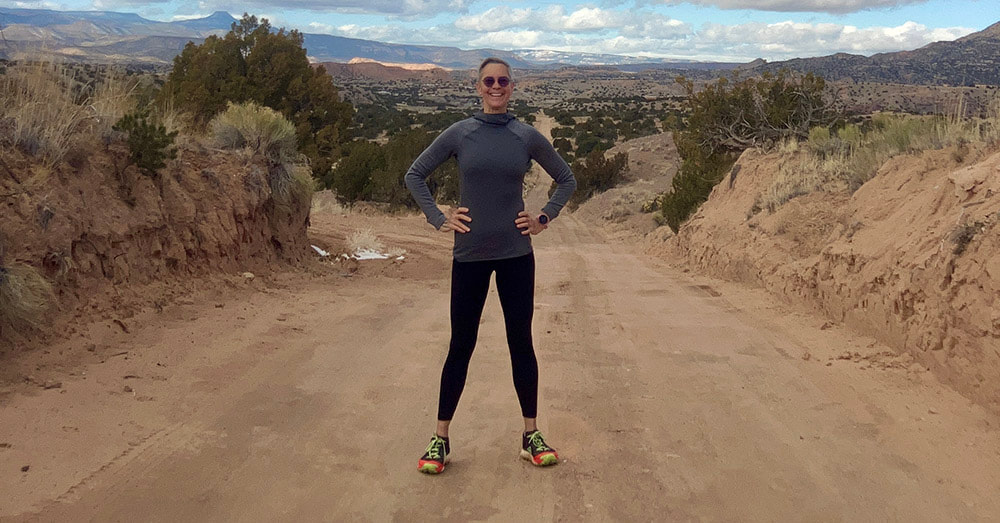
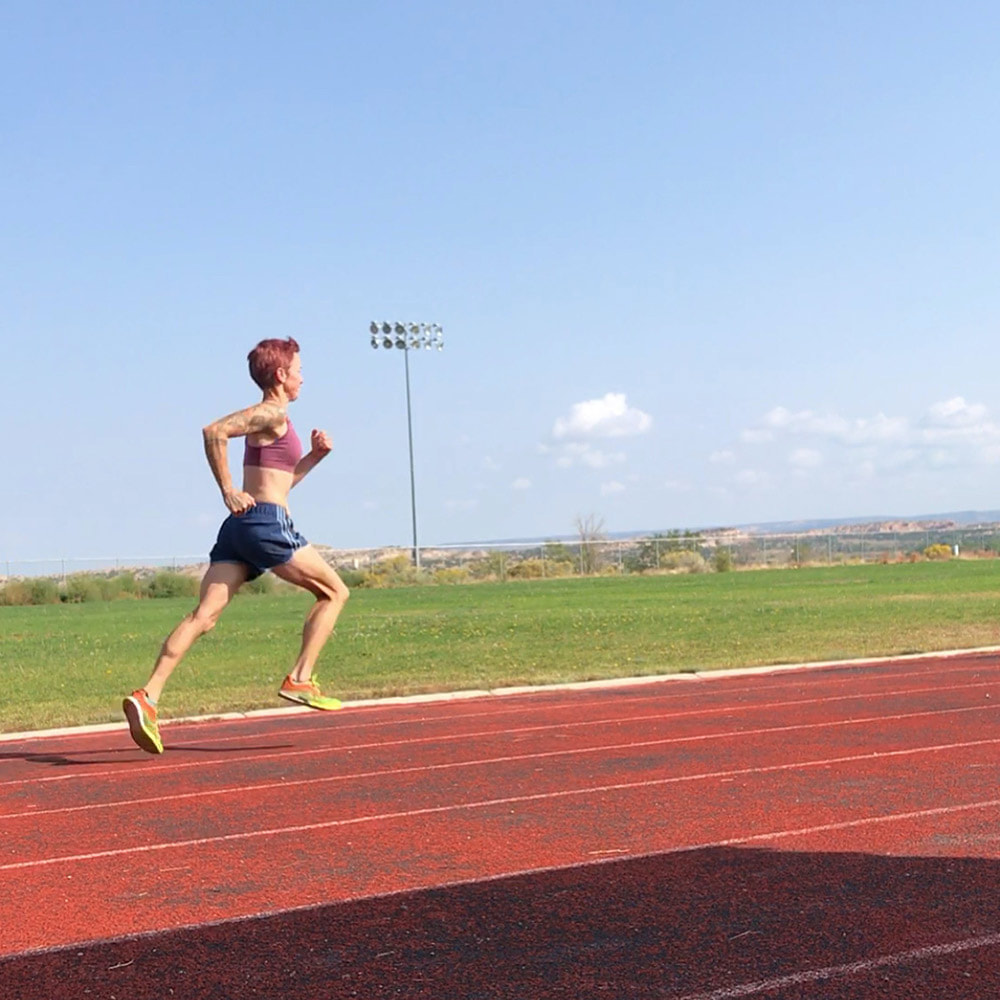
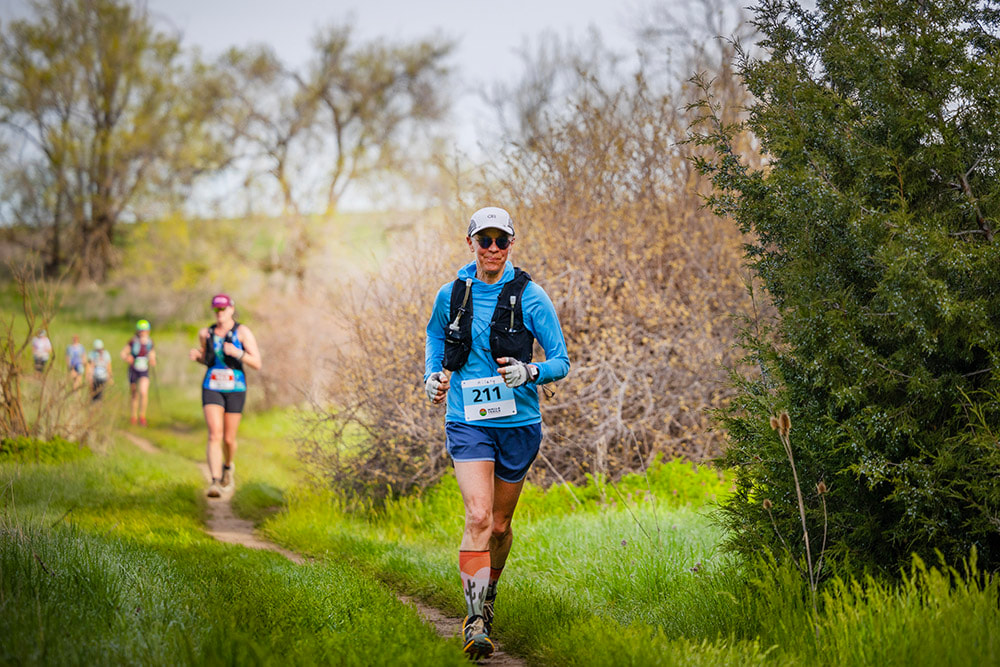
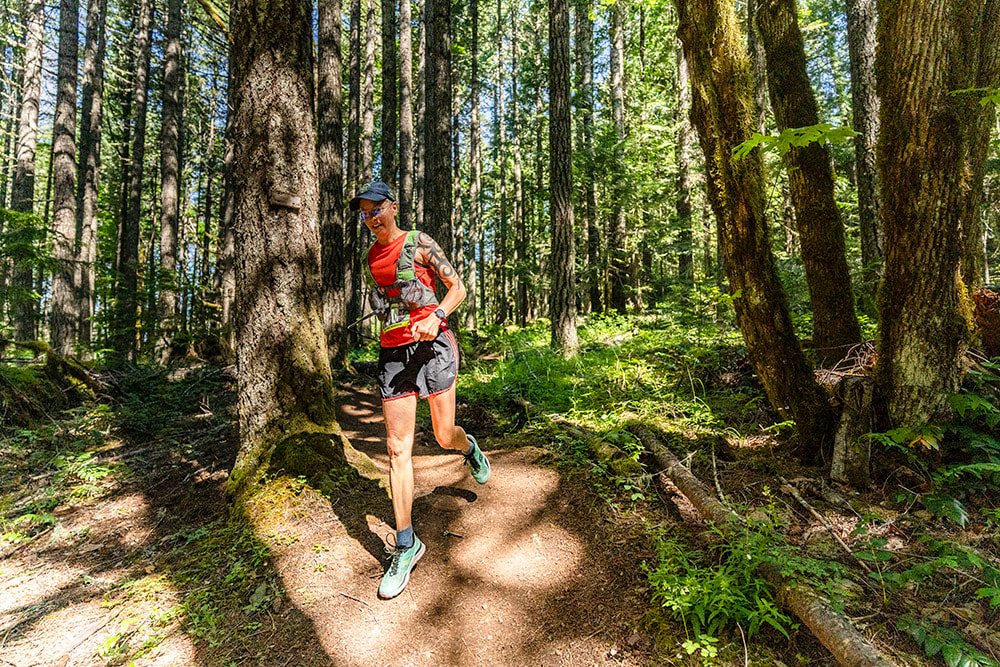

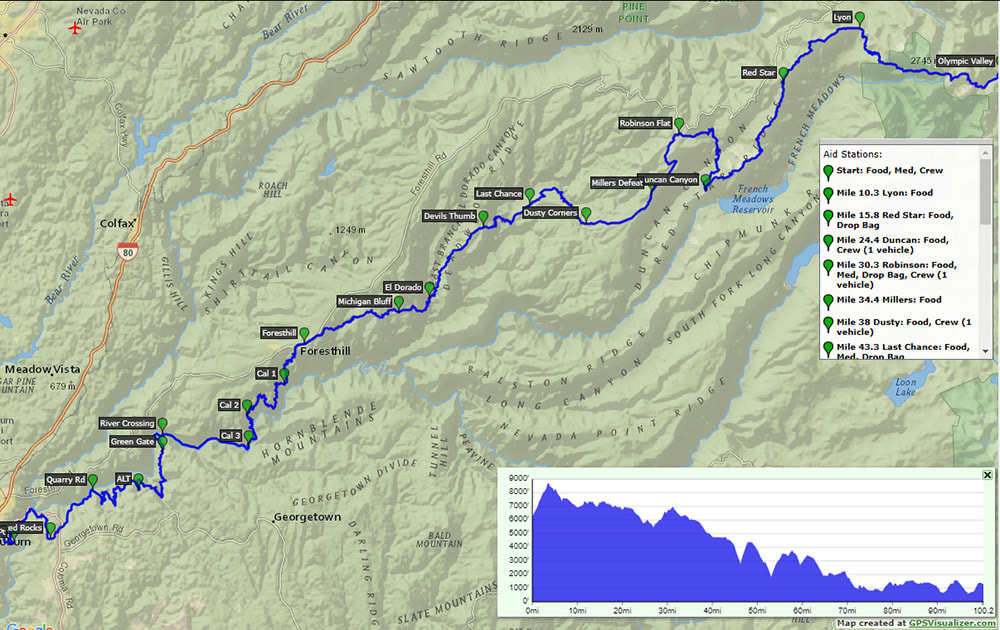
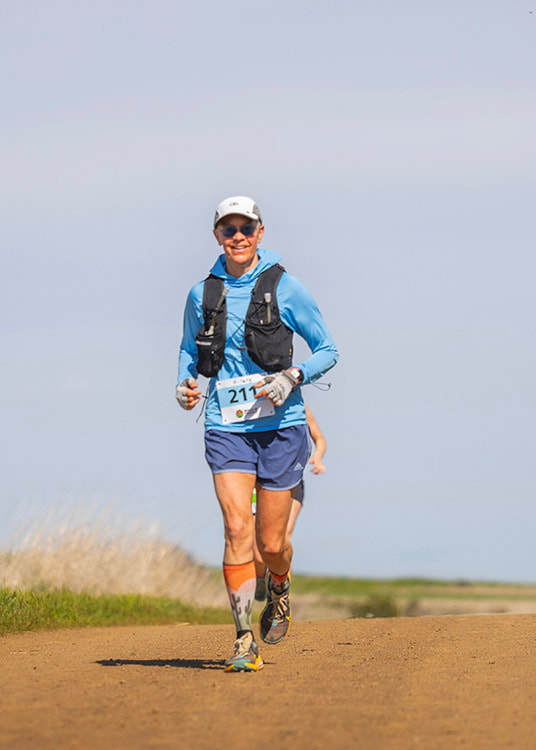
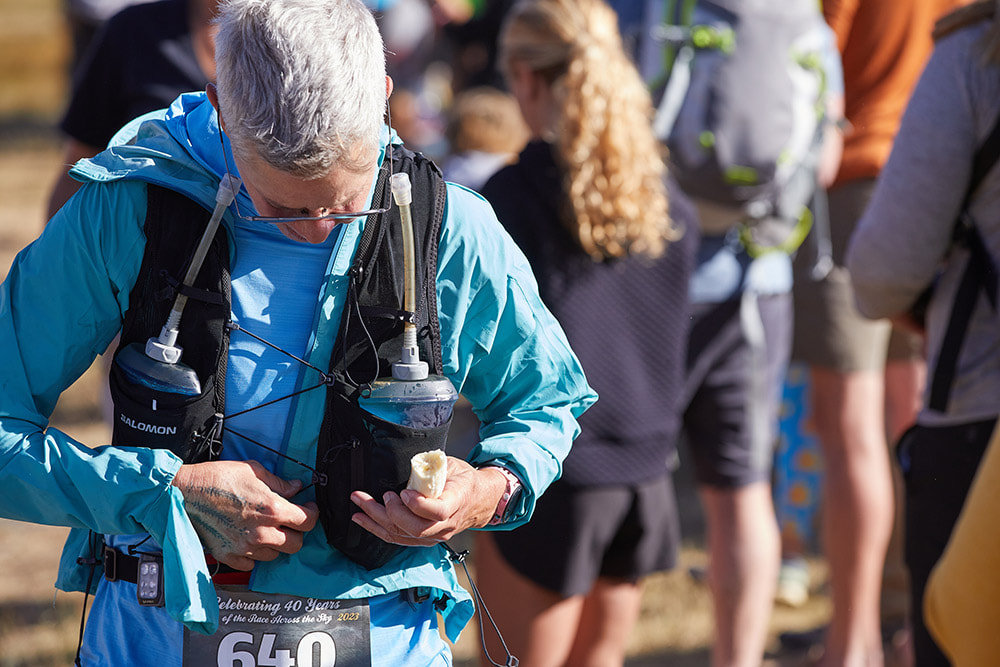
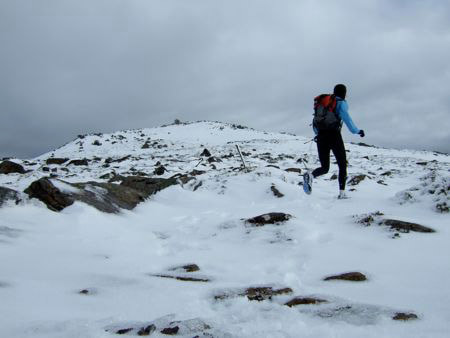

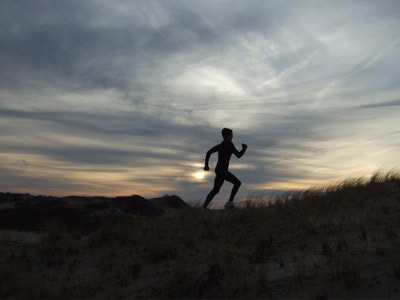


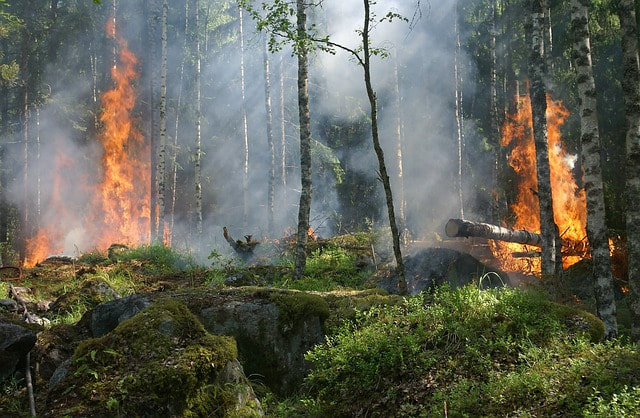
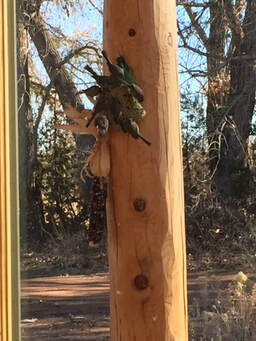

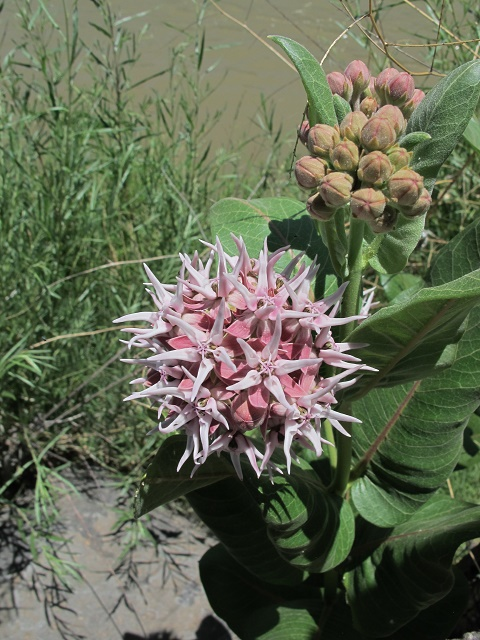
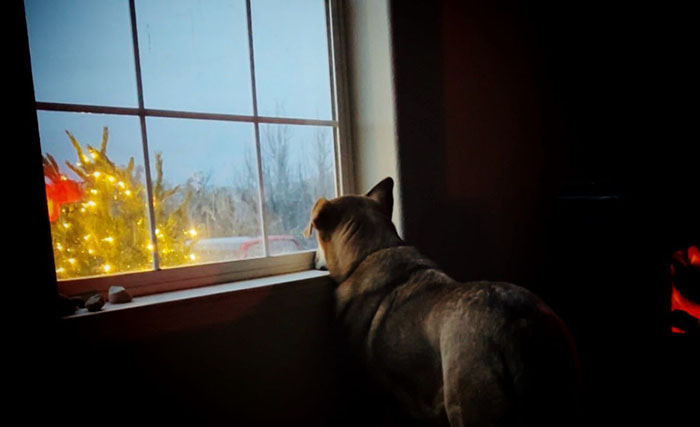

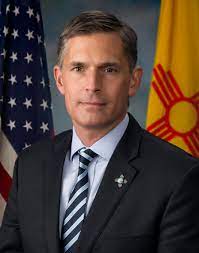
 RSS Feed
RSS Feed